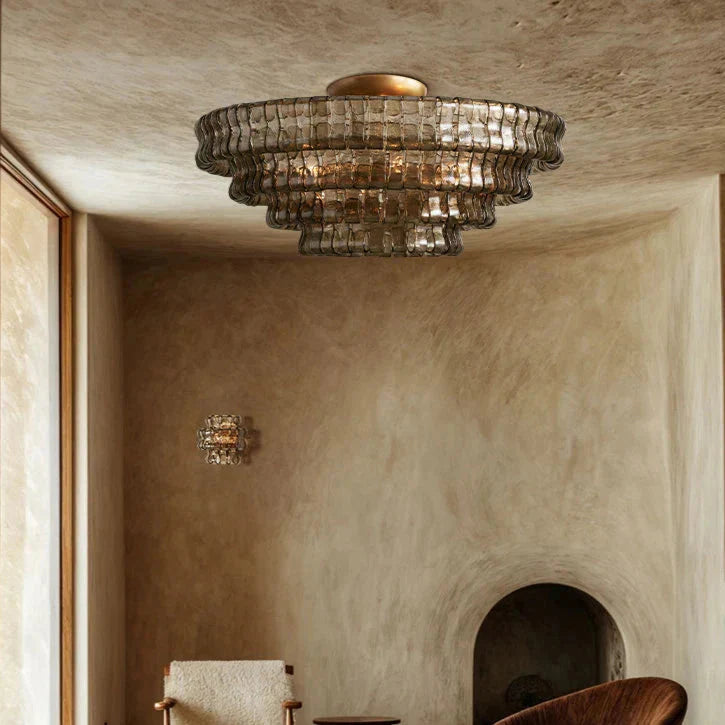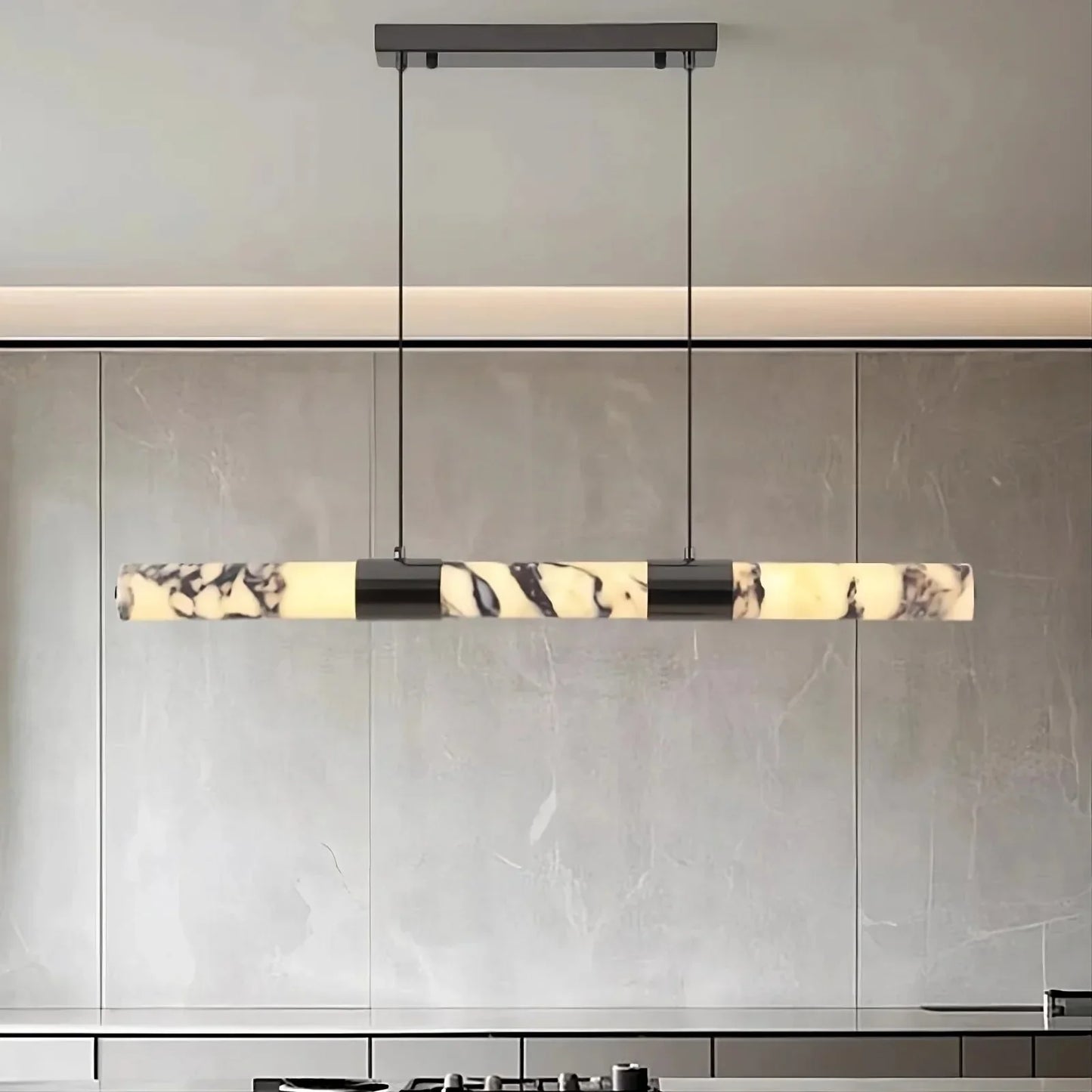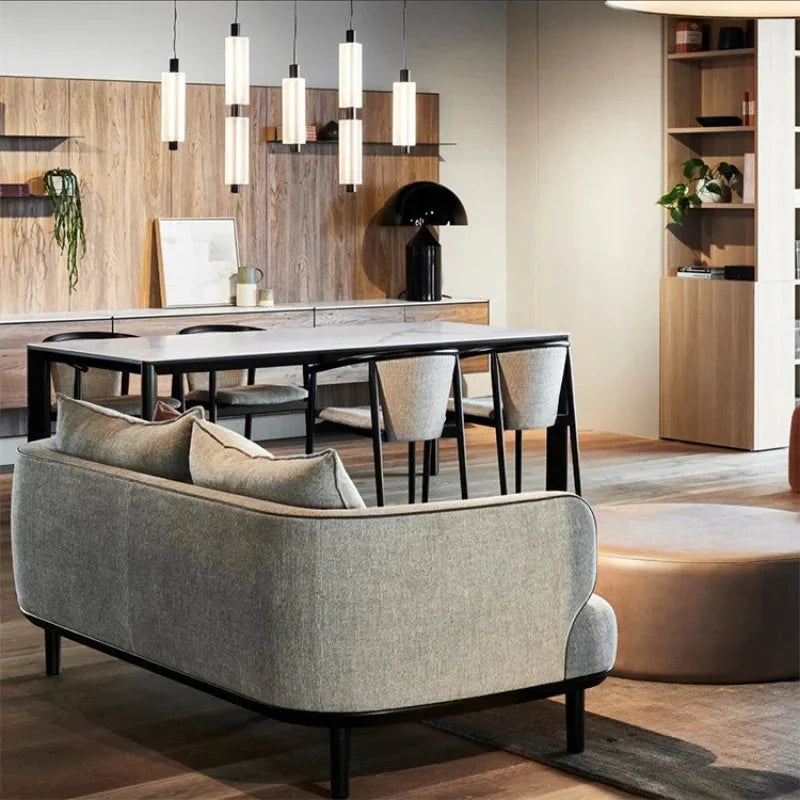Lighting plays a crucial role in creating a functional and aesthetically pleasing kitchen. Among the various lighting options available, pendant lights are popular choices for kitchen islands. However, a common question arises: should pendant lights be centered to the kitchen island? In this comprehensive guide, we explore the best practices for positioning pendant lights and how to enhance your kitchen's overall lighting design with chandeliers, ceiling lights, and other fixtures.
Importance of Proper Kitchen Lighting
Lighting is not merely a functional element in your kitchen; it significantly impacts the room's ambiance and practicality. Proper kitchen lighting ensures that tasks such as cooking, cleaning, and dining are performed with ease. Moreover, it contributes to the overall design and mood of the space. With a variety of lighting options available, from chandeliers to ceiling lights, understanding how to position each fixture is essential for creating an efficient and inviting kitchen.
Understanding Pendant Lighting for Kitchen Islands
Pendant lighting for kitchen islands has become a staple in modern kitchen design. These lights are not only stylish but also provide focused illumination, making them ideal for task lighting. Pendants can be hung at various heights and come in numerous styles, allowing homeowners to personalize their kitchen decor. The primary consideration is whether these pendant lights should be centered on the kitchen island or placed differently for optimal effect.

Benefits of Centering Pendant Lights on the Kitchen Island
Centering pendant lights on the kitchen island offers several benefits. Firstly, it ensures even lighting across the island's surface, making it easier to perform tasks like chopping vegetables or preparing meals. Secondly, centered lights create a balanced and symmetrical appearance, enhancing the overall aesthetic of the kitchen. Additionally, placing pendants in the center allows for more uniform light distribution, reducing shadows and glare.
Challenges of Centering Pendant Lights
While centering pendant lights has its advantages, there are also challenges to consider. Depending on the size and shape of your kitchen island, centered lights might not provide adequate coverage, leaving certain areas dimly lit. Moreover, if your kitchen island doubles as a dining area or workspace, centered lights might not align with seating arrangements or other functional zones, potentially causing discomfort or inconvenience.
Alternative Pendant Light Placements
To address the challenges of centering pendant lights, consider alternative placements that can still provide effective illumination. For instance, placing pendant lights slightly off-center or staggering them can create a dynamic look while ensuring all areas of the island are well-lit. This approach is particularly useful for larger or irregularly shaped islands. Additionally, integrating pendant lights with other types of kitchen ceiling lights can achieve a balanced lighting scheme.
Incorporating Chandeliers and Ceiling Light Fixtures
Chandeliers and ceiling light fixtures can complement pendant lighting, adding layers and depth to your kitchen's lighting design. Chandeliers, often considered more formal, can serve as a focal point above the kitchen island, offering both task and ambient lighting. Ceiling light fixtures, such as recessed lights or track lights, can provide general illumination, ensuring the entire kitchen is well-lit.
Best Practices for Kitchen Ceiling Lights
When planning your kitchen lighting, consider a combination of task, ambient, and accent lighting. Task lighting, such as pendant lights, should focus on work areas like the kitchen island. Ambient lighting, provided by ceiling light fixtures, creates a warm and inviting atmosphere. Accent lighting highlights architectural features or decor elements, adding character to the space. By layering these types of lighting, you can achieve a well-balanced and functional kitchen environment.
Selecting the Right Kitchen Island Light Fixture
Choosing the appropriate kitchen island light fixture involves several factors, including style, size, and functionality. Pendant lighting for kitchen islands comes in various designs, from sleek and modern to vintage and rustic. The size of the fixtures should be proportional to the island and the overall kitchen space. Functionality is key, so opt for fixtures that provide ample light without being overpowering.
Installation Tips for Pendant Lighting
Proper installation is crucial for achieving the desired effect with your pendant lights. Ensure the lights are hung at the correct height, typically 30 to 36 inches above the kitchen island. This height allows for optimal light distribution while preventing glare. Use a level to check alignment, especially if installing multiple pendants. For larger islands, consider using two or more pendant lights to cover the entire surface evenly.
Maintaining and Cleaning Kitchen Light Fixtures
Regular maintenance and cleaning of your kitchen light fixtures are essential to keep them looking and functioning their best. Dust and grease can accumulate on pendant lights, reducing their brightness. Use a soft cloth and a mild cleaning solution to wipe down the fixtures. For chandeliers and other ceiling lights, ensure bulbs are replaced as needed to maintain consistent lighting.
Common Mistakes to Avoid with Kitchen Lighting
When designing your kitchen lighting, avoid common mistakes such as over-lighting or under-lighting the space. Over-lighting can create a harsh, unwelcoming environment, while under-lighting can make tasks difficult and strain your eyes. Additionally, ensure your lighting plan is flexible, allowing for adjustments as your needs change. Avoid placing fixtures where they might obstruct cabinets or appliances.
Enhancing Kitchen Lighting with Smart Technology
Incorporating smart technology into your kitchen lighting can enhance convenience and energy efficiency. Smart bulbs and switches allow you to control the lighting remotely, set schedules, and adjust brightness levels. Some systems even offer voice control, integrating with virtual assistants like Alexa or Google Assistant. Smart lighting can also be programmed to change color temperatures, creating different moods for various times of the day.
Eco-Friendly Lighting Options for the Kitchen
For environmentally conscious homeowners, eco-friendly lighting options are available. LED bulbs are a popular choice due to their energy efficiency and long lifespan. They consume significantly less electricity than traditional incandescent bulbs and produce less heat. Additionally, consider fixtures made from sustainable materials and those that offer dimming capabilities to reduce energy consumption further.
Impact of Lighting on Kitchen Design and Mood
Lighting plays a pivotal role in defining the design and mood of your kitchen. Bright, white lights create a clean, modern look, while warm, yellow lights offer a cozy, inviting atmosphere. The type and placement of fixtures can also influence the room's perceived size and functionality. Thoughtfully chosen lighting can highlight architectural features, create focal points, and enhance the overall aesthetic appeal of your kitchen.
Integrating Pendant Lights with Other Decor Elements
When incorporating pendant lights into your kitchen design, consider how they interact with other decor elements. The style, color, and finish of the lights should complement the cabinets, countertops, and other fixtures. For a cohesive look, choose pendant lights that echo the materials and tones used elsewhere in the kitchen. Additionally, consider the scale of the lights in relation to the space, ensuring they do not overpower or underwhelm the decor.
FAQs
Should pendant lights be centered over a kitchen island?
Centering pendant lights over a kitchen island provides even lighting and a balanced look, but alternative placements can also be effective depending on the island's size and shape.
How high should pendant lights be hung above a kitchen island?
Pendant lights should be hung 30 to 36 inches above the kitchen island to ensure optimal lighting without causing glare.
Can I use chandeliers above my kitchen island?
Yes, chandeliers can be used above kitchen islands for a decorative touch and ample lighting, especially in larger kitchens.
What are the benefits of using LED bulbs in kitchen lighting?
LED bulbs are energy-efficient, have a long lifespan, and produce less heat, making them an eco-friendly option for kitchen lighting.
How can smart lighting enhance my kitchen?
Smart lighting allows for remote control, scheduling, and adjusting brightness levels, enhancing convenience and energy efficiency.
What are the best practices for kitchen ceiling lights?
Combine task, ambient, and accent lighting for a well-balanced and functional kitchen environment.
Conclusion
Determining whether pendant lights should be centered over a kitchen island involves considering both aesthetics and functionality. While centering offers symmetry and balanced lighting, alternative placements can be equally effective, especially for larger or uniquely shaped islands. By integrating pendant lights with chandeliers, ceiling light fixtures, and smart technology, you can create a versatile and inviting kitchen space. Remember to choose fixtures that complement your kitchen's design and ensure proper installation and maintenance for optimal results.






